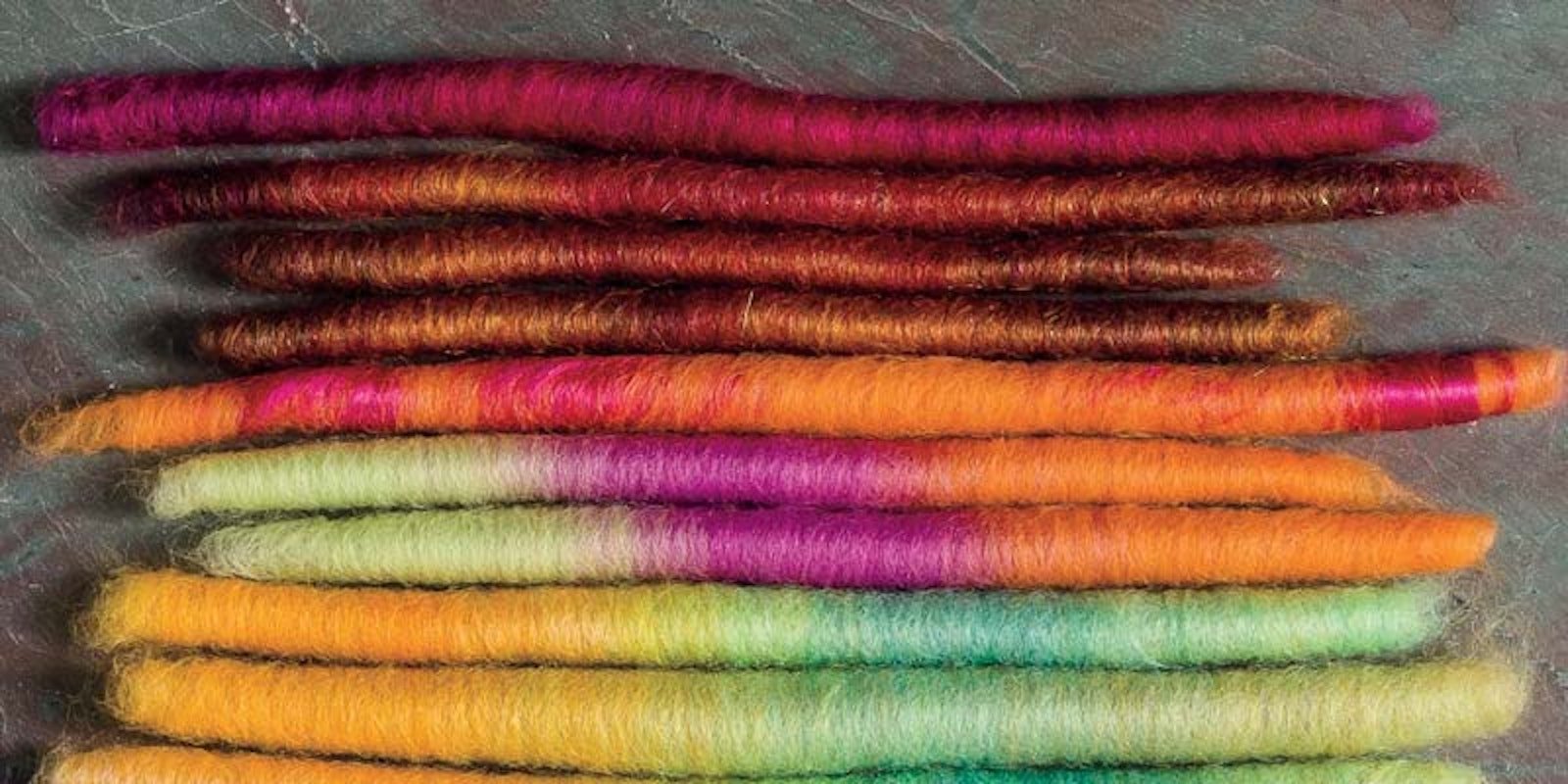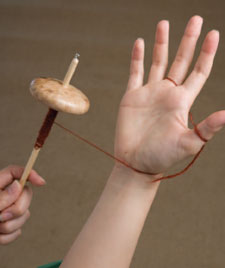Drop spindles are ancient yarn-making tools that were a necessity in ancient times and are still used in many parts of the world. There are basically two types of spindles; suspended and supported. Spindles are simple tools comprised of a shaft (the stick) and a whorl (the weight). Suspended spindles are suspended in air by the thread as they twist and come in two basic forms: bottom whorl (with the weight at the bottom of the spindle shaft) and top whorl (with the weight at the top of the spindle shaft). Supported spindles are spun with the tip of the shaft resting on a surface—they, too, can be bottom or top whorl spindles.
Free Guides and Tutorials for Spinning With Drop Spindles
Instructions for Spinning on a Spindle
Types of Drop Spindles
Low-whorl spindles
Low-whorl drop spindles have the weight at the bottom, giving them a low center of gravity. This provides good stability as a result. They tend to be forgiving of minor flaws in balance or shaping, so they’re easier to make. A heavy low-whorl spindle will spin better than a heavy high-whorl. A low whorl spindle may or may not have a hook, notch, or other device to assist with keeping the spun yarn secured to the spindle while you spin the next length.
High-whorl spindles
High-whorl drop spindles have the weight at the top. Light weight high whorl spindles are often found to spin better than heavier ones. High-whorl spindles get more top-heavy as they fill, with the spinning motion becoming irregular sooner than when spinning on a low-whorl spindle.







